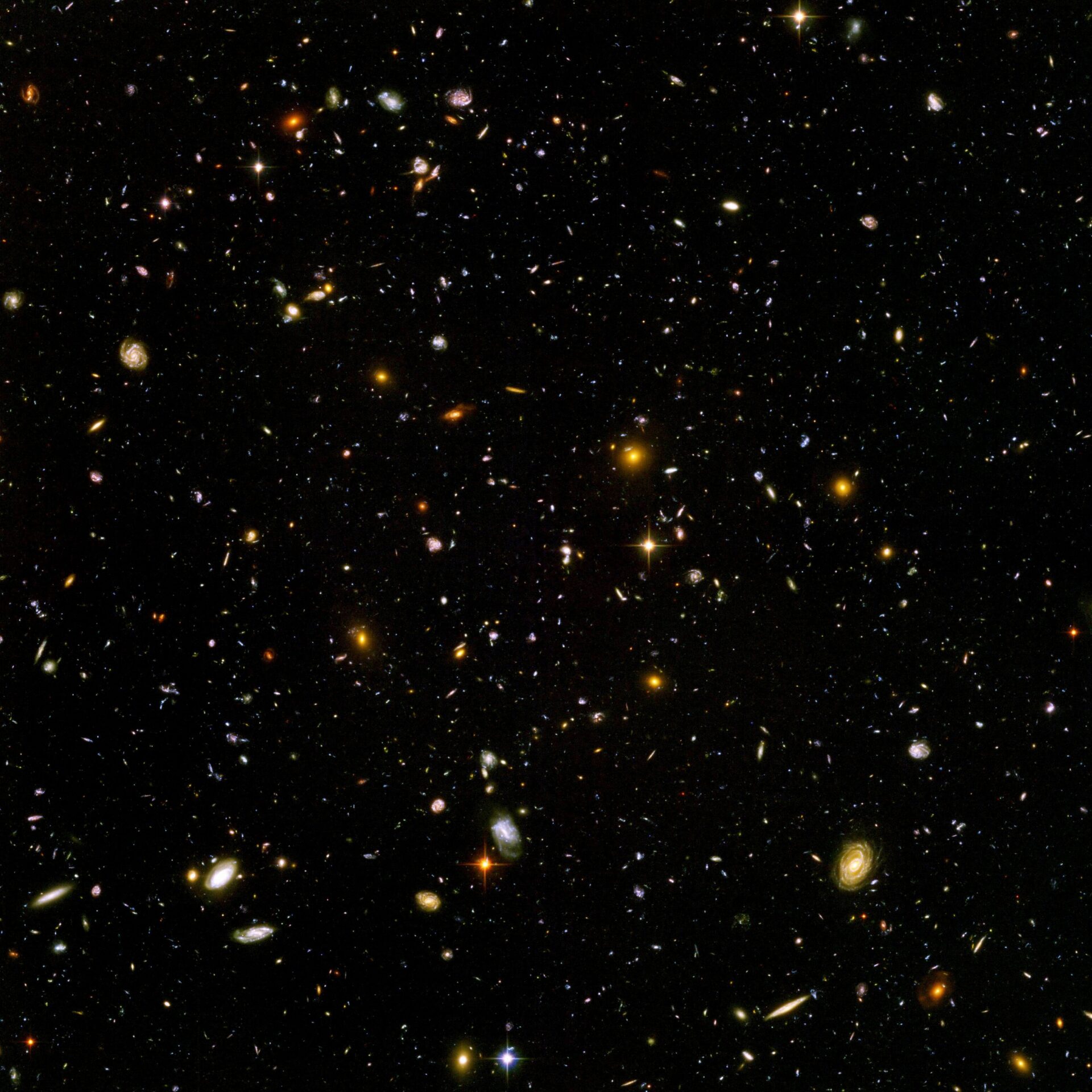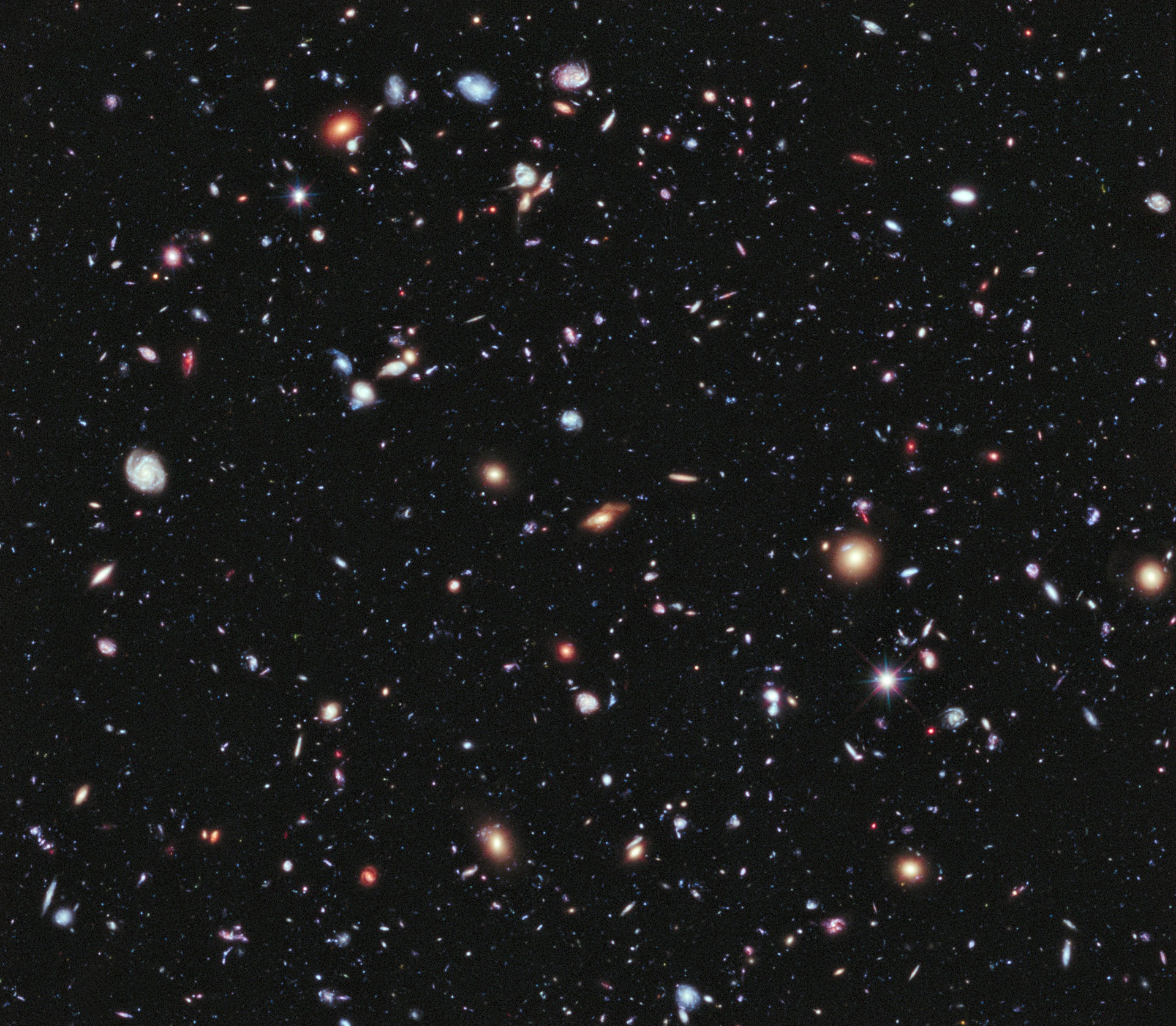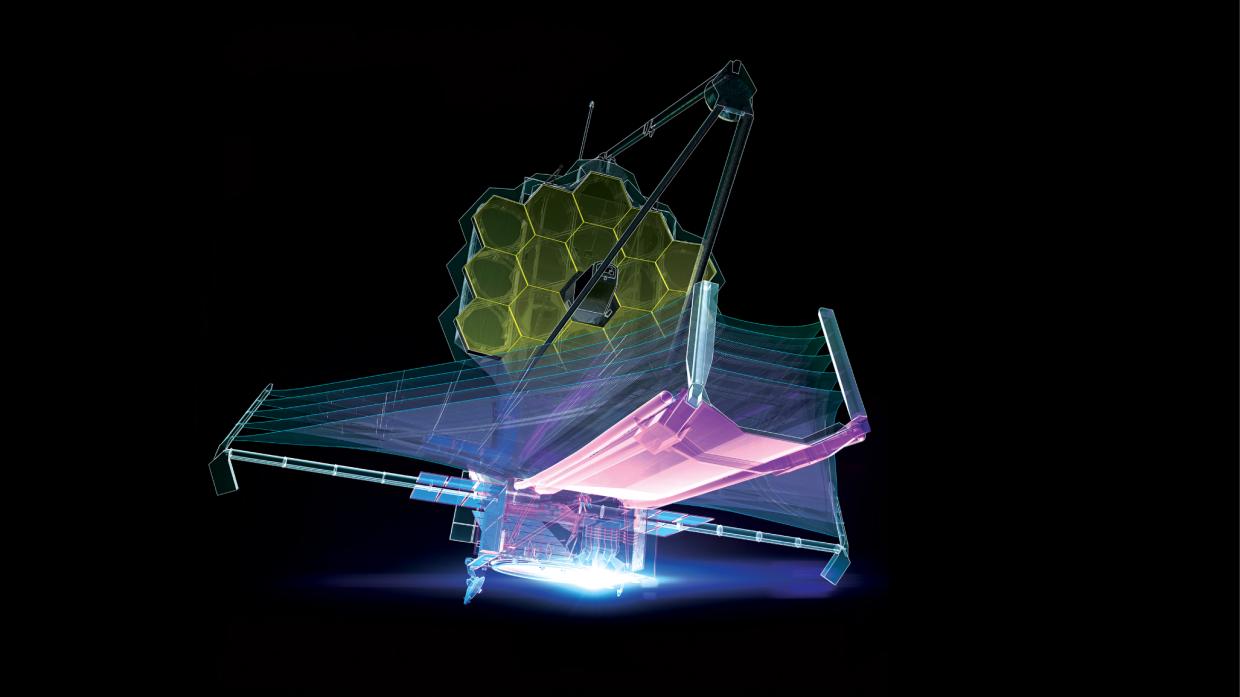The Universe has gigantic dimensions. It contains a huge number of stars and galaxies. But “a huge number of galaxies” is how many? According to Mario Livio, an astrophysicist from the Space Telescope Science Institute in Baltimore, scientists’ estimates differ on this issue. The acceptable range so far is from 100 to 200 billion.
The first device that helped to calculate at least an approximate number from a scientific point of view was the Hubble Space Telescope. In 1995, astronomers sent a cosmic eye to the empty area of the Ursa Major and collected light for ten days. The result was an image of about 3 thousand faint galaxies in one frame. This photo was named Hubble Deep Field and was the farthest that was ever seen in the Universe at that time.

In 2003 and 2004, scientists captured the Hubble Ultra Deep Field, which revealed about 10 thousand galaxies at a tiny point in the constellation Fornax. In 2012, the experiment was repeated for the third time with improved instruments – 5.5 thousand galaxies were captured in a photograph called Hubble eXtreme Deep Field.


In total, Hubble has discovered about 100 billion galaxies in the Universe. However, after James Webb is fully operational, this number will probably increase to 200 billion. Moreover, scientists are not sure that even 200 billion galaxies is the final figure.

Follow us on Twitter to get the most interesting space news in time
https://twitter.com/ust_magazine

